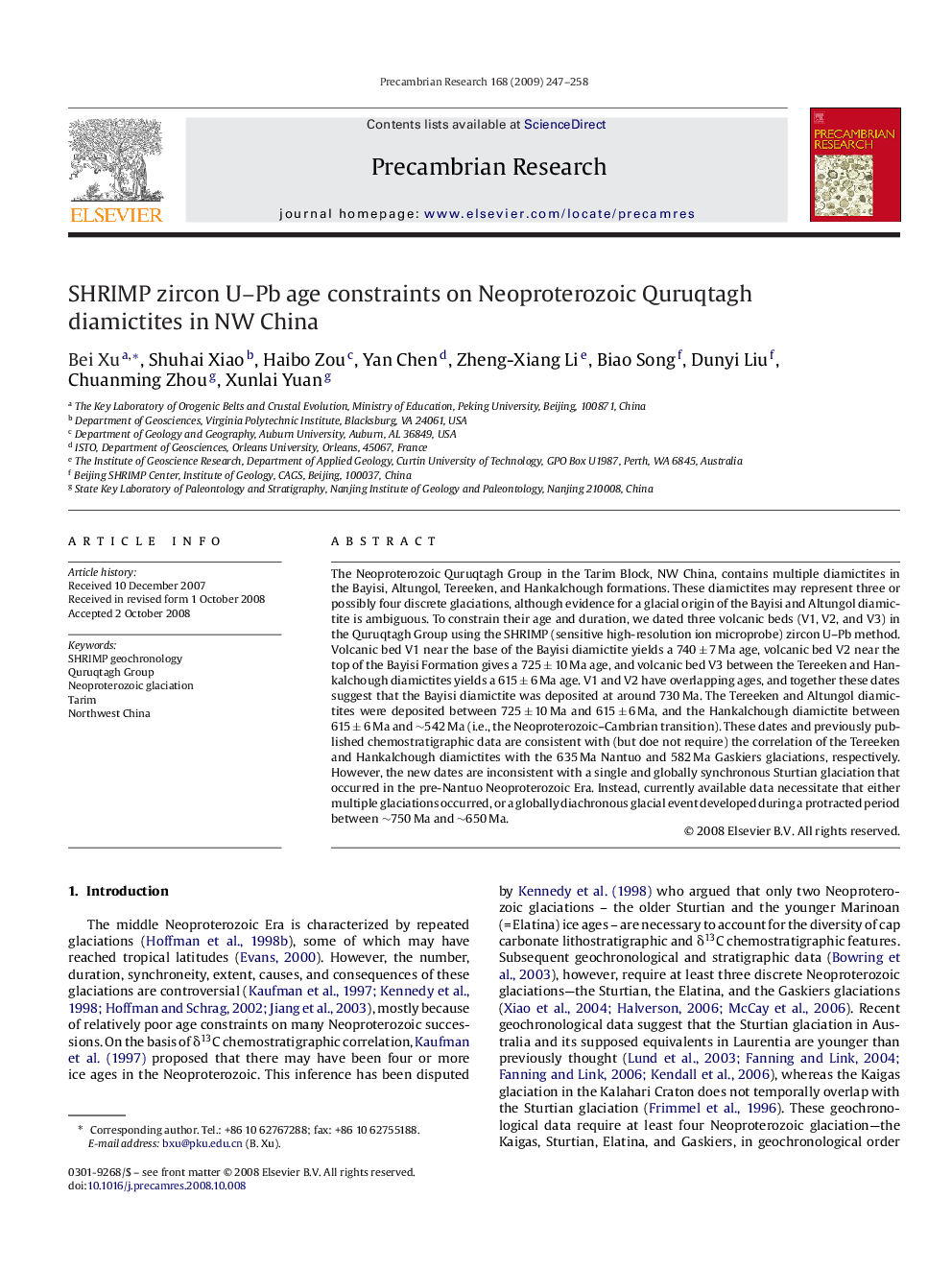| Article ID | Journal | Published Year | Pages | File Type |
|---|---|---|---|---|
| 4724238 | Precambrian Research | 2009 | 12 Pages |
The Neoproterozoic Quruqtagh Group in the Tarim Block, NW China, contains multiple diamictites in the Bayisi, Altungol, Tereeken, and Hankalchough formations. These diamictites may represent three or possibly four discrete glaciations, although evidence for a glacial origin of the Bayisi and Altungol diamictite is ambiguous. To constrain their age and duration, we dated three volcanic beds (V1, V2, and V3) in the Quruqtagh Group using the SHRIMP (sensitive high-resolution ion microprobe) zircon U–Pb method. Volcanic bed V1 near the base of the Bayisi diamictite yields a 740 ± 7 Ma age, volcanic bed V2 near the top of the Bayisi Formation gives a 725 ± 10 Ma age, and volcanic bed V3 between the Tereeken and Hankalchough diamictites yields a 615 ± 6 Ma age. V1 and V2 have overlapping ages, and together these dates suggest that the Bayisi diamictite was deposited at around 730 Ma. The Tereeken and Altungol diamictites were deposited between 725 ± 10 Ma and 615 ± 6 Ma, and the Hankalchough diamictite between 615 ± 6 Ma and ∼542 Ma (i.e., the Neoproterozoic–Cambrian transition). These dates and previously published chemostratigraphic data are consistent with (but doe not require) the correlation of the Tereeken and Hankalchough diamictites with the 635 Ma Nantuo and 582 Ma Gaskiers glaciations, respectively. However, the new dates are inconsistent with a single and globally synchronous Sturtian glaciation that occurred in the pre-Nantuo Neoproterozoic Era. Instead, currently available data necessitate that either multiple glaciations occurred, or a globally diachronous glacial event developed during a protracted period between ∼750 Ma and ∼650 Ma.
